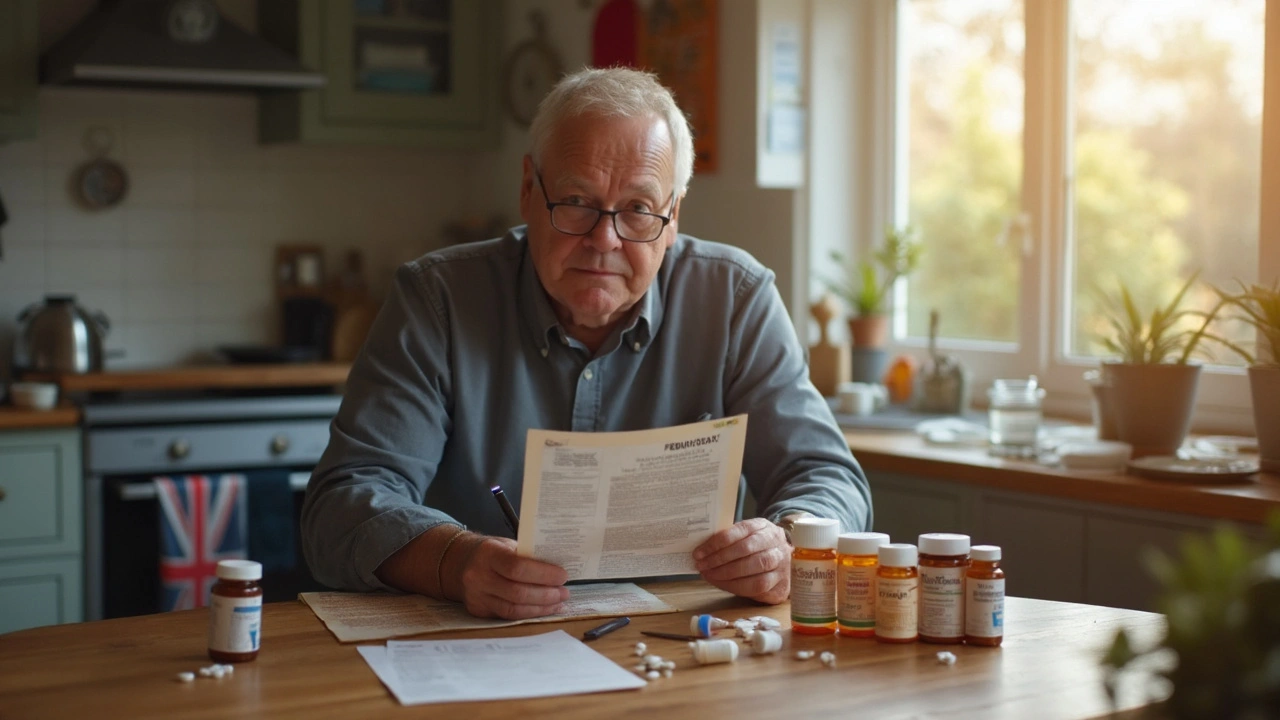Gout Medications: Quick Relief and Long-Term Options
Gout attacks hit fast and hurt a lot. Knowing which medicines stop the pain now and which ones lower uric acid for good can change how often you flare. This guide walks through the common options, what to expect, and simple tips to use them safely.
Short-term relief: stop the attack
When a flare starts, the goal is to reduce inflammation and pain. Most people use one of these:
- NSAIDs (like naproxen or ibuprofen): work well if you can take them. Watch for stomach, kidney, or blood pressure issues, especially if you're older or on blood thinners.
- Colchicine: effective if taken early. Common side effects include diarrhea and stomach cramps. Dose timing matters—start as soon as symptoms begin and follow your prescriber's plan.
- Corticosteroids (oral or injected): used when NSAIDs or colchicine aren’t suitable. They reduce inflammation quickly but aren’t a long-term solution due to side effects if used often.
Pick the right option with your doctor. If over-the-counter meds don’t help within 48 hours, contact your clinician for a stronger or alternative approach.
Long-term control: lower uric acid and prevent flares
To prevent future attacks, doctors aim to keep uric acid below a target level. Common urate-lowering therapies (ULT) include:
- Allopurinol: the most common first choice. It lowers uric acid production and is usually started at a low dose and slowly increased. Some people need blood tests to monitor liver, kidney function, and rare allergic reactions.
- Febuxostat: another option that works well for some patients, especially if they can’t tolerate allopurinol. It may have different heart-related risks, so clinicians weigh benefits and risks per person.
- Probenecid: helps kidneys remove uric acid and suits people with under-excretion. Not ideal if you have kidney stones or certain kidney problems.
Starting ULT can trigger flares early on. That’s normal. Doctors often give low-dose colchicine or NSAIDs for the first few months to reduce that risk. Regular blood tests to check serum uric acid help adjust doses until targets are met.
Practical tips: take medicines exactly as prescribed, report any unusual rashes, stomach issues, or breathing problems, and don’t stop ULT suddenly. Lifestyle changes—lose weight if needed, limit sugary drinks and excess alcohol, and reduce high-purine foods—make meds work better.
Thinking of buying medicines online? Use trusted pharmacies, verify prescriptions, and avoid sites that sell powerful drugs without a prescription. If you have questions about interactions or side effects, reach out to your healthcare team or a pharmacist for clear, practical advice.
Gout is manageable with the right mix of short-term treatment and long-term medication. Work with your clinician to pick the safest, most effective plan for you and keep a record of attacks so you can track progress.

Febuxostat Drug Interactions: Safe Use and Medication Combinations
Mixing febuxostat with other drugs can get complicated fast, especially for gout patients who often take multiple meds. This article breaks down how febuxostat interacts with common prescriptions and over-the-counter drugs, sharing data, examples, and tips for safer combos. Learn what to avoid, what to watch for, and how to talk with your doctor about combining medications effectively. Stay informed and take control of your gout treatment by understanding these crucial details. Anyone who takes febuxostat—or cares for someone who does—will get practical, easy-to-understand advice here.
Read More